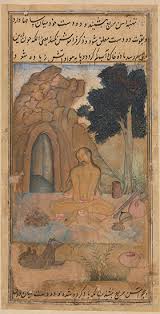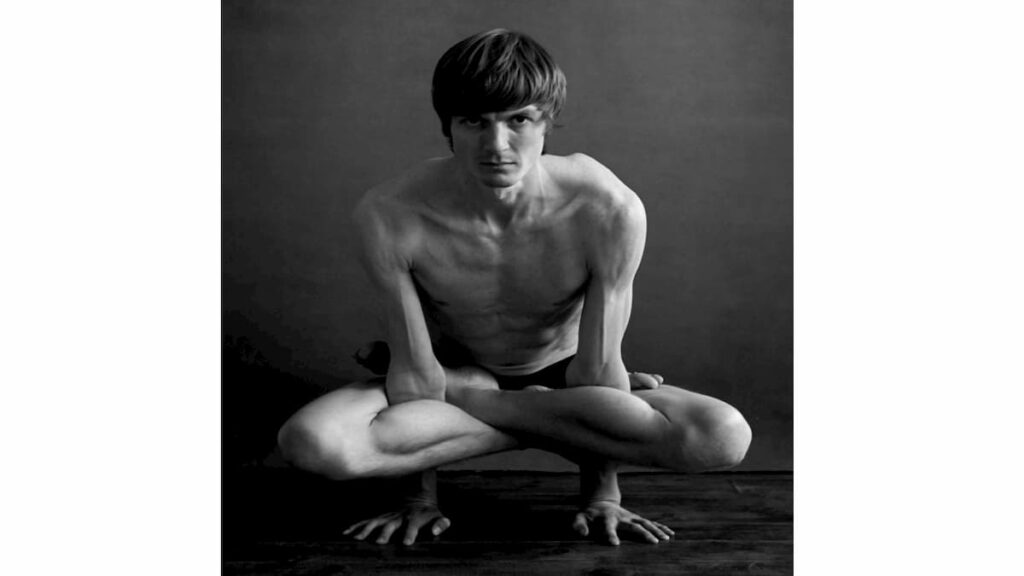Introduction
Kukkutasana is one of the advanced yoga postures. It belongs to the Padmasana Group and arm balancing category.
It is one of the ancient yoga postures like the Lotus Posture and Adept Posture. Most of the medieval hatha yoga texts commend this posture and hence it has been one of the most popular yoga poses. Furthermore, this posture has been a part of Kundalini and Tantra yoga practices.
This article describes its meaning, steps, and benefits.
Kukkutasana Information
| Pose Name | Kukkutasana |
| Sanksrit Name | कुक्कुटासन |
| IAST | Kukkuṭāsana |
| English Name | Cockerel Pose Rooster Pose |
| Origin | Ancient |
| Level | Advanced |
| Group | Padmasana |
| Type | Arm Balancing |
Kukkutasana Meaning

Kukkut means cockerel or rooster. Therefore Kukkutasana means Cockerel Pose or Rooster Pose. When performed, the posture looks like a cockerel. Hence it gets this name.
We spell this alternatively as Kukudasana.

A sixteen-century Persian Text Bahr al-Hayat calls this Pose as Thambha Asana (Sthambhasana). The text further says “on performance, the matter of earth and water in the body will get reduced and the matter of air and fire will get increased.”
This book is the first illustrated textbook on yoga. Bahr al-Hayat means the ocean of life. This book was translated from Sanskrit Original and published in 1602 by Muhammad Ghawth Gwaliyari.
Origin and History
Cockerel Posture is an ancient yoga pose found mentioned in Thirumanthiram, Ahirbudhnya Samhita (Seventh Century Vaisnava tantric text), and Vasista Samhita (Twelfth Century yoga text). As far as the age of these texts, they are pretty much older than medieval Hatha Yoga texts like Hatha Yoga Pradipika and Gheranda Samhita.
Verse 561 of Thirumanthiram describes the steps for the performance of Kukkutasana. Thirumanthiram is a Tamil poetic work by Thirumoolar written probably between 200 BCE to 700 CE.
Therefore, it is evident that the Cockerel Pose is an ancient yoga pose that has been in practice for more than thousand five hundred years. Besides this, it is one of the non-meditative postures that was in practice before Hatha Yoga poses came into existence.
Kukkutasana Procedure
The practice includes precautions, preparatory poses, step-by-step procedures, follow-up poses, and advanced pose considerations.
Kukkutasana Safety and Precautions
Pregnant ladies should avoid this posture. Besides this, persons having the health conditions mentioned below should also avoid posture.
- Pain and ailments in shoulders and arms
- Sciatica Pain or pain in the lower back
- Knee injury
- Osteoporosis
In this posture, the weight of the whole body rests on the forearms. Hence your forearms should be capable of taking this pressure. In case of doubt, consult your doctor before attempting this pose.
Preparatory Poses
The first thing to consider is to understand that the Cockerel Pose is an advanced one and requires some specific skills. So, if you want to get mastery over it, you should prepare yourself first. For getting prepared, one should have proficiency in the following poses.
Kukkutasana Steps
Step 1
Firstly, sit in Lotus Posture. Insert your arms in between your thighs and calves as close as to your knees.
Step 2
Secondly, Place the palms on the floor. Your fingers should point forward.
Step 3
Thirdly, lift your body on your hands. Check that your arms are in a straight line.
Step 4
Fourthly, Straighten your back and head. Keep your eyesight on any object in front of you. Keep this position for the desired duration of time.
Step 5
Lastly, reverse the position and release it from the Lotus Posture. Again repeat the steps by alternating the legs in Lotus Posture. Maintain the posture for the duration of time.
Duration
The pose may be extended for a duration as long as it is comfortable for you. Initially, it is not possible to keep the position for more than a couple of minutes. However, as the practice goes on, you can extend up to five or six minutes.
Follow Up Poses
One may resort to any one of the following poses as a follow-up practice.
Tips
Those who are having a large amount of fat or hair in the thigh region find it difficult to perform this posture. Applying oil in that region may be of little help.
Kukkutasana Benefits
The regular practice of Cockerel Pose gives all the benefits of the Lotus Position. In addition to that, one can get the following benefits.
Strengthens the arms and shoulders
Regular practice of Cockerel Pose strengthens the muscles of arms, shoulders, and upper chest. As a result, mobility and flexibility will get increased. Besides this, pain and ailments in the region get eroded.
Increases the flexibility of hips and legs
As a consequence of regular practice, the muscles and joints of the legs, hips, and lower back are stretched. They get more flexibility and Mobility. As a result, it cures any disorders and pain.
Awakens Kundalini
This practice helps to activate the Muladhara Chakra and awakens the Kundalini. By means of this, the yogi gets progresses in the spiritual path.
